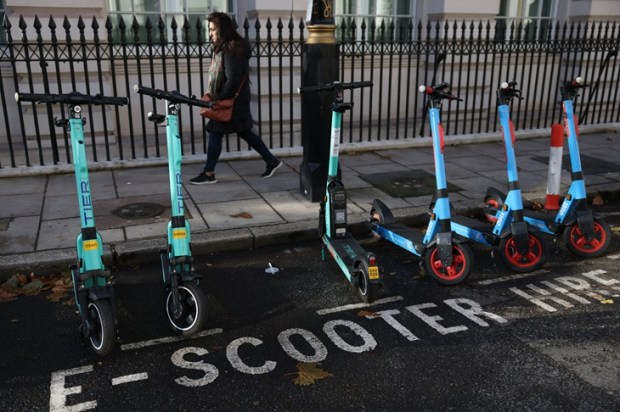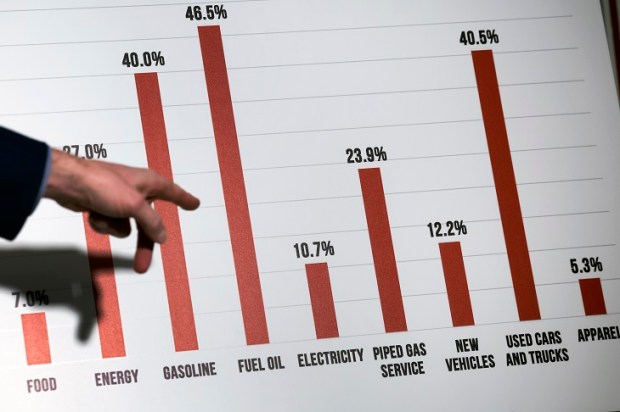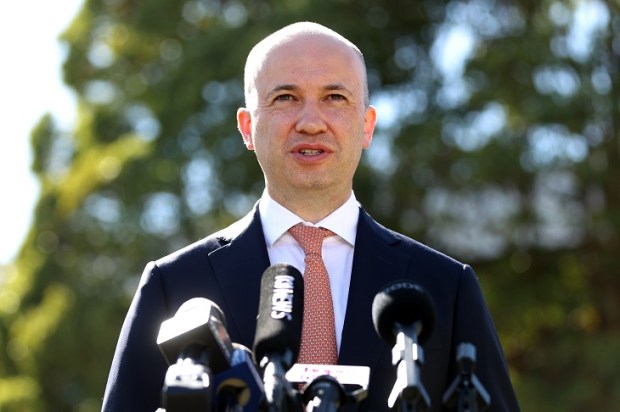How Green was my Valley? The 1939 novel and film of the same name, by Richard Llewellyn, was based in Victorian times in the Welsh valleys where the green countryside was being progressively destroyed by mining for the coal which lay beneath. It provided the classic conflict between development and nature, seeking out food and progress, but at what price?
Environmentalist Greens view our world from this perspective; the trees and valleys must be saved from being buried under mining dust. It is a mission that only they can fulfil if they ignore the poverty this approach can cause.
Starting in many countries in the early 1970s, the conservation movement’s initial aim was to prevent destruction of the environment. Its forebear was perhaps the Campaign for Nuclear Disarmament (CND) movement, which was an anti-nuclear weapon protest that developed in the UK during the Cold War period of the late 1950s. Subsequent records show that misinformation is nothing new where, for example, financial support to CND was provided by the British Communist Party, which was in turn funded by Russia. Fortunately, it failed to pressure the government to give up nuclear weapons, the possession of which undoubtedly prevented a war of mutual destruction.
Out of this movement sprang a number of protest groups, all hoping that by ignoring human nature they could change the world into a better place. Many like-minded individuals progressed to mainstream politics. Their common ideals, initially based on environmental protection, were largely anti-nuclear, pacifist, advocated for wealth redistribution, social justice, and the protection of minority rights. In the 1960s the CND symbol became a symbol of the UK Hippy movement, as did popular icons like communist revolutionary Che Guevara.
In America, counter-culture began with the civil rights movement, spreading in the 60s to include anti-Vietnam war protests that were amply supported by psychedelia. The environmental aspect of the protest was slower to develop. Nuclear testing and oil spills from rigs eventually became focal points; the latter resulted in the formation of Greenpeace in Canada in 1971. This movement transformed into Greenpeace International. A Federal Greens political party was formed in the US only in 2001 and, apart from California (no surprise), it has had little political sway.
Australia developed early environmental activism through the anti-nuclear movement, with bomb tests carried out at Maralinga in South Australia and the Montebello Islands in WA. A total of 12 tests were carried out between 1953-63. Antipathy to the tests progressively increased and polls in 1957 showed that nearly 50 per cent of citizens were against it. A number of sites were selected for building nuclear power stations, but increasing mass protest prevented construction and led to an eventual nuclear power ban in 1998, with provision for one small reactor to produce medical isotopes at Lucas Heights. Uranium mining was even banned in Western Australia between 2002-08.
With concern about climate change rising, a private members bill in 2022 has brought the debate back to life; recent polls suggest general support for nuclear power, but politicians are loath to grasp the nettle.
Australia had its first environmental political party during the Tasmanian State election of early 1972, closely followed by a New Zealand equivalent in the election of later that year; subsequently, in the late 1970s, groups with similar green ideology sprang up in many European countries.
An early success was the Tasmanian Green’s precursor, the Tasmanian Wilderness Society, led by Bob Brown, who went on to lead its successor at its formation in 1992. A qualified doctor, in the early days, he was inspired by Bob Menzies and contemplated joining the Liberals until environmentalism took hold.
The campaign against the Franklin dam in 1981, succeeded because of the local response to his activism. With its reliable rainfall, the state still has numerous electricity-generating dams and supplies the mainland with hydropower. Having been a renewable energy supporter, it is my view that in his twilight years Bob Brown has undermined his climate credentials with complaints about a plan to put wind turbines in his own backyard. The Greens in Australia continue to prevent non-polluting electricity generation from dams, reduced water collection will result in water shortages, and less flood mitigation, as the population grows and drought returns.
Affiliated organisation Greenpeace promotes similar environmental ideologies. It claims success in climate change, reducing fossil fuel, increasing renewable use, and cleaning the oceans. None of these changes are due to the organisation. Even its headline claim to have saved the whales is not wholly true. The whale population started to increase in the 1860s, long before Greenpeace was formed. The discovery of fossil fuel-derived oil made whale oil redundant for lighting. This development signalled the end of the industry and whale numbers recovered.
With Bob Brown’s retirement, the environmental thrust of the movement has continued, but with social issues assuming increasing importance under its new leader, Adam Bandt. Commentators talk of the party becoming more like a watermelon, green on the outside and red in the middle. The agenda has spread from its original ecological aims to include sustainability, free health, free education, social justice, non-violence, human rights, same-sex marriage, protection of minorities, promotion of multiculturalism, increased pensions at earlier ages, increased minimum wage, increased public housing, nationalising energy production, increased refugee intake and asylum seekers, legalising marijuana… In fact, the list includes all of the usual Woke suspects. They also still maintain the traditional anti-nuclear stance. The one thing they fail to address is the major cause of the world’s pollution – overpopulation.
Their website contains an A to Z wish list, included in the list is Paying for the Plan, an item which, when opened, states only two words, ‘NOT FOUND’! This shopping list of welfare policies is hugely expensive; their latest announcements about doubling the dole payment occur whilst they attempt to shut down mining, fossil fuels, and agriculture, the means of paying for it. Apart from shutting down the military (echoes of Ban the Bomb) and taxing billionaires to fund these pipe dreams, there is no concept of fiscal responsibility – and no plan for self-defence.
The first taste of green power came in Europe in the 1990s, with its formation of a coalition government with the German Social Democratic Party. The primary target was the closure of the country’s nuclear power stations, a goal they failed to completely achieve (fortunately, as with the Ukraine War they are now once more an important power source).
The reality has finally struck that nuclear power is the major source of European electricity generation, and the only alternative to dependence on fossil fuels.
The Greens party has achieved success in Finland by forming part of the government in the 1990s. Since then, the party has remained an important political voice. In 2022, it did the unthinkable and supported the introduction of nuclear power as a major step in reducing CO2-induced climate change. Its decision was based on the relative damage caused by nuclear waste versus the perceived greater world threat of global warming; this policy was supported by polls showing only 10 per cent against. That concept has a long way to progress in Australia, with the Greens still unable to accept it as the only way to provide reliable, cheap power.
Current Australian leader, Adam Bandt, has followed a predictable path, including penning a thesis was on rethinking Marxist legal theory. After a spell as an industrial lawyer, he turned to the Greens as a vehicle for his ideological pursuits; with the party’s importance in upper house votes, these are now coming to radical Marxist fruition, as the expanded agenda is promulgated. At the 2022 election Greens’ Senate numbers increased from 9 to 12, with 4 members in the lower house.
The advent of the Teals, a nominally independent group, has added to Greens influence, and likely government instability. Funded by wealthy environmental activists, this group of women from inner-city electorates have contributed to Liberal losses and altered the balance of power in Parliament. Having just one professed agenda, that of climate change, their importance is yet to be revealed, with the party expressing no clear views on other important issues such as China, national debt, cost of living, taxation, etc. The party colour was supposed to represent middle ground between the Liberal blue and the Greens, time will tell if this is the case.
At a local government level, activism can easily overwhelm general apathy and low voter turnout; many councils have been captured, particularly those inner-city areas containing the same self-righteous residents who voted Teal. Rather than concentrate on roads, sewage, water supply, and local facilities, they declare their area a nuclear free zone. They change language and signage to comfort those who have gender issues. They cancel Christmas and Australia Day celebrations, because they might offend. Some have plans to ban non-electric vehicles.
Meanwhile, Teals and Greens support for environmental policies, will ensure destruction of current reliable power generation. Our future electricity supply is at risk and the lights will start going out next year. As fossil-fuelled electricity is closed down, to be replaced by intermittent solar and wind, we may yet be forced to live in caves in the dark. With electricity failure, will come further loss of manufacturing and jobs, a reality yet to become apparent to unions and Labor. There is little mention of China, where many jobs have already gone; it continues to build new coal-fired power stations to enable cheap manufacturing of goods Australians used to make, whilst increasing its CO2 emissions each year by more than this country’s total.
We can but hope the Greens’ demands for cancelling all new mines will derail the Labor’s carbon tax plans, they also plan to block the National Reconstruction Fund unless new mines are cancelled. We are long overdue a rational climate and energy debate, a debate based on fact not ideology; but what is equally concerning are the other items on the Greens’ agenda, where will the money come from to pay for their extravagant agenda? Apart from keeping the lights on, if they and their fellow travellers hold a balance of power, what will be the future of mining and farming, the mainstays of our economy? The need for greater military spending, to deal with the China threat, will also put the Greens anti-military philosophy under scrutiny.
Back to our starting point in the Welsh valleys, where the government is banning new roads as they ‘worsen CO2 emissions’; they want the valleys to become green again, but more likely the only result will be traffic jams – with increased CO2 production from their non-moving car exhausts.
Got something to add? Join the discussion and comment below.
Get 10 issues for just $10
Subscribe to The Spectator Australia today for the next 10 magazine issues, plus full online access, for just $10.


























Comments
Don't miss out
Join the conversation with other Spectator Australia readers. Subscribe to leave a comment.
SUBSCRIBEAlready a subscriber? Log in